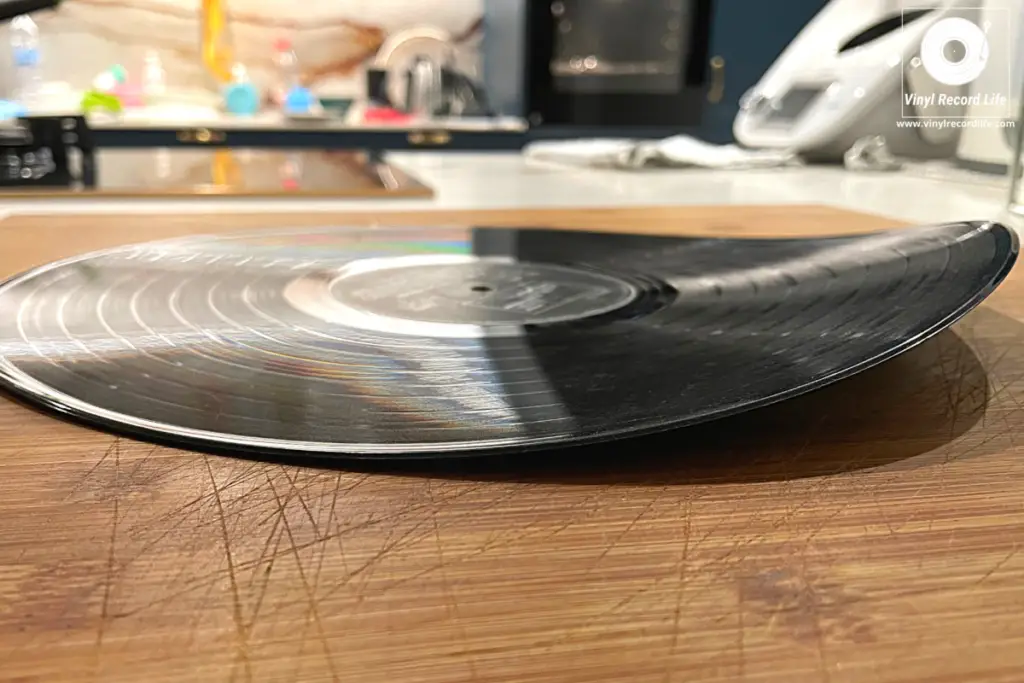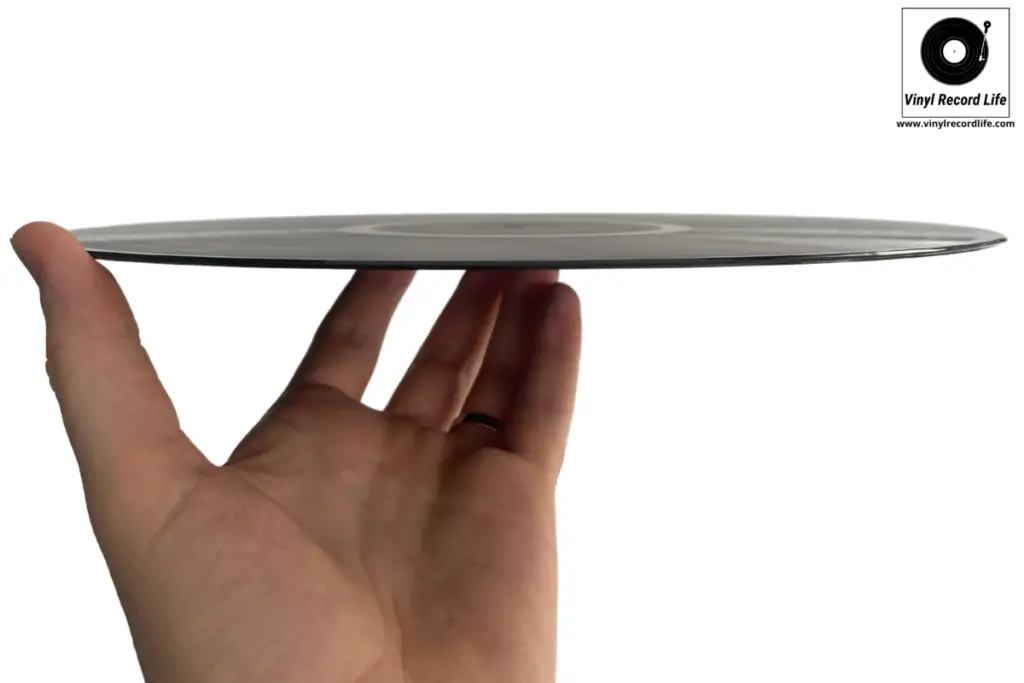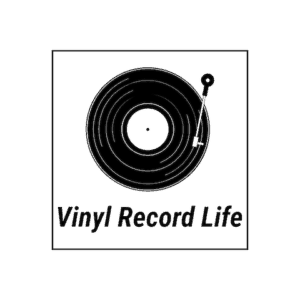A warped record is a fairly common thing to encounter when you’re building up a record collection, and despite your best efforts to avoid it happening, you’re more than likely to experience it at least a few times.
But what causes a vinyl record to warp, and how can you avoid it happening in the first place?
Vinyl records warp due to excessive heat, pressure, weight, and direct light, and are often affected by a combination of these influences. Careful storage, which takes into consideration these factors, will help minimize the risk of your record getting warped.
In this article I’ll take a more detailed look at all the things that can lead to a warped record, and also cover how you can prevent it happening, as well as some of the possible fixes that can be applied if you already have a warped vinyl.

How To Prevent a Record From Becoming Warped
Good record storage practice is the key to avoiding a warped record. For top tips on how to store a vinyl record collection, check out our guide.
Making sure your records are stored away from direct sunlight is a first step towards protecting them from warping.
That avoidance of heat and UV generated from sitting in sunlight will ensure your records don’t overheat, and if you’re able to keep them stored with an ambient temperature of around 65ºF to 70ºF (18-21ºC) then they’ll be kept in optimum conditions.
And of course keeping records stored vertically, without large batches of them leaning on one another, is crucial when it comes to avoiding the kind of slow build up of weight and pressure that can warp them over time.
How To Fix a Record That’s Already Been Warped
It’d be annoying to say prevention is the best fix, right? It is, but of course there’s always a risk that records can get warped, even when you take care with storing and handling them. Also, sometimes you do end up buying second-hand records that are slightly warped, and you won’t realize until later.
The simplest way to flatten a record, and my preferred method, is to simply place it between two heavy (but not super heavy) flat objects and leave it for a good while.
Clean the record well before you do this, to remove any potentially damaging dirt or debris, and protect it properly by placing it inside a fresh non-static inner sleeve. Then, place it flat on a lint-free cloth, with another on top – the aim here is to cushion the record so that its grooves don’t become flattened in the process.
Once you’ve got the record all set, carefully sandwich it between two weighty objects such as a pair of big books, before leaving it for a few days, and this should help flatten it again. You may need to go a second round, depending on how warped the record was.
I prefer this method as I believe it’s far less risky than some of the other ways people suggest. You’ll see some suggestions of placing your records between sheets of glass in an oven, which to be honest seems quite ridiculous to me as it’s not just impractical, but it’s tricky and potentially dangerous.
The only other way I’d recommend fixing a warped record would be looking up a professional service – there are studios that can flatten warped records for you – or, if you’ve got the money, inclination and also have a big second-hand haul of records to straighten out, to get a special record flattener.
Why Vinyl Records Warp: The Main Causes
Excessive Heat
Too much heat will make a vinyl record malleable, and therefore susceptible to bending and warping.
Polyvinyl Chloride, more commonly know as PVC, makes up 96% of the resin mix that is used to create a vinyl record, and PVC has low thermal stability.
This means that exposure to heat, UV rays and pollution leave the record vulnerable to damage.
Generally, PVC has a maximum operating temperature of around 140ºF, or 60ºC, at which point distortion due to heat will occur. In fact, it will often happen even before it reaches that level. So a vinyl record will usually warp when its ambient temperature gets close to 140ºF.
Simply put, when vinyl records get too hot, the PVC component in the record reacts by becoming soft, and the disc can lose its shape. See here how heat affects vinyl records.
Direct Sunlight
As mentioned, UV has an impact on vinyl and can also lead to weakening the record, thus leaving it vulnerable to warping.
Direct sunlight has a double impact of both UV and heat, so can be particularly damaging to records.
Too Much Pressure
Even without the two aforementioned factors, undue pressure and weight being applied to records can cause them to warp over time.
This usually manifests itself through poor storage of records, where they’re stacked incorrectly, left leaning against one another, or generally not treated with care.
All it takes is for a record to be left at a slight lean for a period of time for it to develop a slight warp, and if a little heat and/or sunlight are added to the mix then the conditions are perfect for a misshapen record.
How Can You Tell if a Record Is Warped?
Sometimes it’s glaringly obvious when a record has become warped, but often it isn’t quite so clear.
There are two ways you’ll be able to figure out if a record’s been warped; visually, or audibly.
By holding a record up, you’ll be able to see if its surface is true and flat, or if it’s warped.
Hold it to your eye level, and look across the record’s surface from its outer edge towards the spindle hole in the center of the record. It should be fairly easy to gauge if the record is “true” and flat, or if it’s warped.
Alternatively, you can also place it on a flat surface, such as a tabletop, with a protective layer underneath it, and see how it lies on this flat surface.
When listening to a record, you’ll be able to detect warping through variations in the wow and flutter.
Wow and flutter are pitch variations that you’ll hear with every revolution of the record – wow tends to be a slower change in pitch, and flutter a faster one.
Wow and flutter aren’t always detectable if they’re minimal, and they can also be caused by other mechanical factors of the actual equipment a record is played on, but by inspecting the record visually and paying close attention to the audio quality, you should be able to establish if the record’s warped.

Is It Ok To Play a Warped Record?
If the warping of your record is minimal and doesn’t bother you, you may be wondering if it’s ok to play it regardless.
It’s always advisable to avoid playing a warped record, as it can impact a number of other things.
Playing a warped record can place excessive pressure on the stylus and cantilever of your turntable, and by damaging these you’re not only affecting your audio equipment but also potentially damaging other records that will later be played on it.
Heavily warped records can cause the stylus to jump, and this can cause serious damage to both the stylus, cantilever and cartridge of the turntable, as well as the grooves of the already-warped record.
